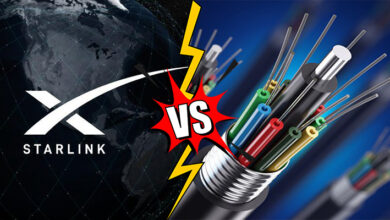Canon’s Grand Entry Into Chipmaking And Disrupting ASML With New ‘Stamping’ Technology Intensifying Global Chip War
In a bid to disrupt the semiconductor manufacturing sector and challenge industry leader ASML, Japanese technology giant Canon is poised to introduce groundbreaking changes in chipmaking technology. With its innovative "nanoimprint" lithography technology, Canon aims to offer a cost-effective alternative to ASML's established EUV technology, potentially reshaping the dynamics of the global chip industry. As the industry grapples with intense competition and geopolitical challenges, the dynamics of chipmaking continue to shape the global technological sector, with not only companies competing with each other but also nations vying for supremacy.
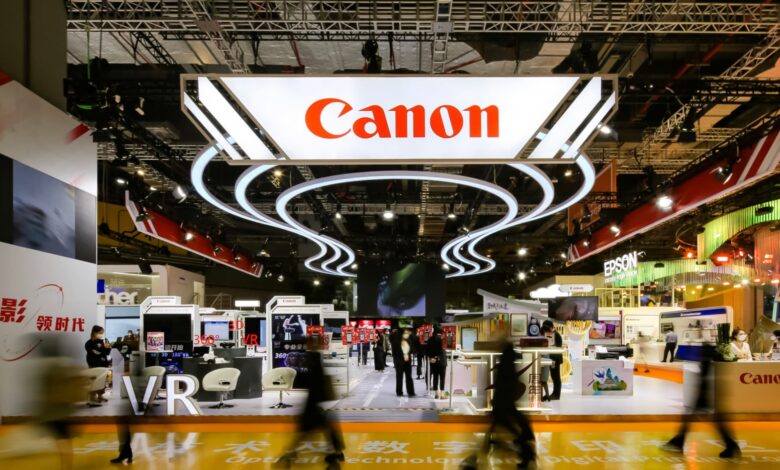
Canon is gearing up to revolutionize chipmaking and lithography machines, aiming to challenge the dominance of ASML and inject more competitiveness into semiconductor manufacturing.
The Japanese tech giant is preparing to enter the semiconductor manufacturing arena, targeting ASML’s stronghold.
With over 15 years of development, Canon’s new “nanoimprint” lithography technology is poised to hit the market soon, according to reports.
This technology involves imprinting chip designs onto silicon wafers, offering a potentially cost-efficient alternative to ASML’s EUV (extreme ultraviolet) technology.
Canon asserts that its nanoimprint lithography is not only cheaper but also consumes significantly less power—up to 90% less than ASML’s EUV technology.
The strategic move by Canon comes amidst heightened efforts by European and American governments to restrict China’s access to advanced semiconductor tech, presenting an opportunity for Canon to regain its foothold against competitors from South Korea, Taiwan, and China.
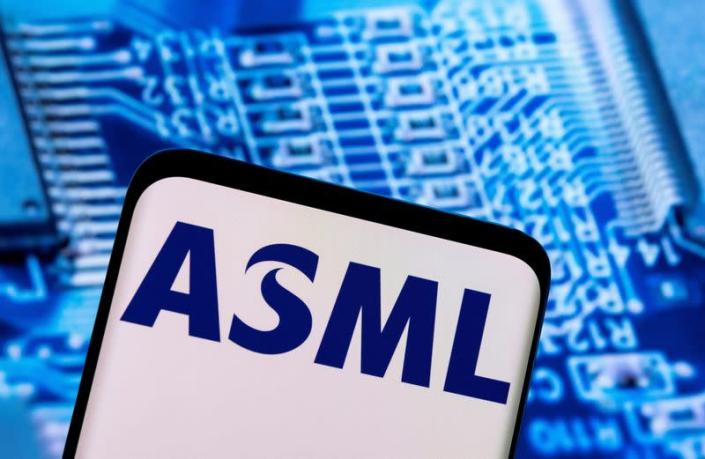
Filling The Gap
While ASML’s EUV machines are indispensable for producing cutting-edge chips, their price tag of over $150 million each opens a window for Canon to position its technology as a more economically viable option.
Initially, Canon plans to concentrate on manufacturing 3D Nand memory chips before branching out to more intricate microprocessors.
However, Canon’s technology is anticipated to encounter hurdles in achieving high levels of miniaturization, especially starting from the 5-nanometer node and aiming for 2nm.
Analysts are expressing skepticism regarding Canon’s potential impact, citing concerns about the maturity of its technology and its ability to compete with ASML’s established EUV technology.
The critical factor determining the viability of Canon’s nanoimprint lithography will be its success rate in achieving a high yield of flawless chips.
While there is optimism that Canon could find a market in China, a door closed to ASML due to US export controls, Japan‘s own export regulations aimed at advanced semiconductor manufacturing equipment may present challenges.
Mr. Fix It
Canon is aware of the uncertainties surrounding potential sanctions and acknowledges the necessity for cautious handling of these issues.
The company intends to commence deliveries for trial periods, seeking to persuade customers of the benefits of integrating its machines into existing fabrication plants with minimal layout changes.
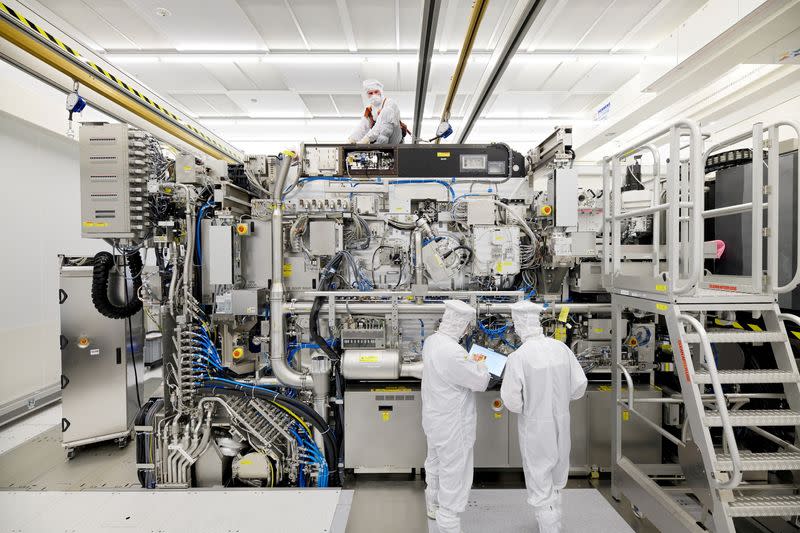
The Race For Supremacy
The semiconductor industry is fiercely competitive, with major players such as Intel, Nvidia, and Qualcomm striving for market dominance.
This intense competition drives rapid technological advancements, enhances product quality, and improves customer value propositions.
As of January 2024, Nvidia holds a prominent position in terms of market capitalization among semiconductor companies, followed by TSMC, Broadcom, Samsung, and ASML.
As of 2021, only three companies have the capability to manufacture the most advanced semiconductors: TSMC of Taiwan, Samsung of South Korea, and Intel of the United States.
Key technology firms like Apple, Nvidia, and Qualcomm rely on TSMC’s semiconductors. Other notable players in the Taiwanese semiconductor industry include United Microelectronics Corporation (UMC) and MediaTek.

The Global Chip War And Intensifying Competition
In today’s technology-driven era, the global chip industry is witnessing an escalating battle for supremacy.
The intricate supply chain, dominated by a few influential players, is characterized by substantial entry barriers, extensive talent ecosystems, and intricate intellectual property (IP) landscapes. Chips can be broadly categorized into three types: large (analog), medium (memory), and small (logic).
China’s Pursuit of Competitiveness
China, striving to establish itself as a significant player across all segments of the chip industry, faces distinct challenges throughout the supply chain.
While it anticipates hurdles in competing with entrenched players in more remote supply chain sectors, China is progressively making headway in segments closer to end consumers, where specialized expertise is relatively less crucial.
As China aims to strengthen its capabilities, its success in the chip sector hinges on adeptly navigating these obstacles and solidifying a resilient position within the value chain.
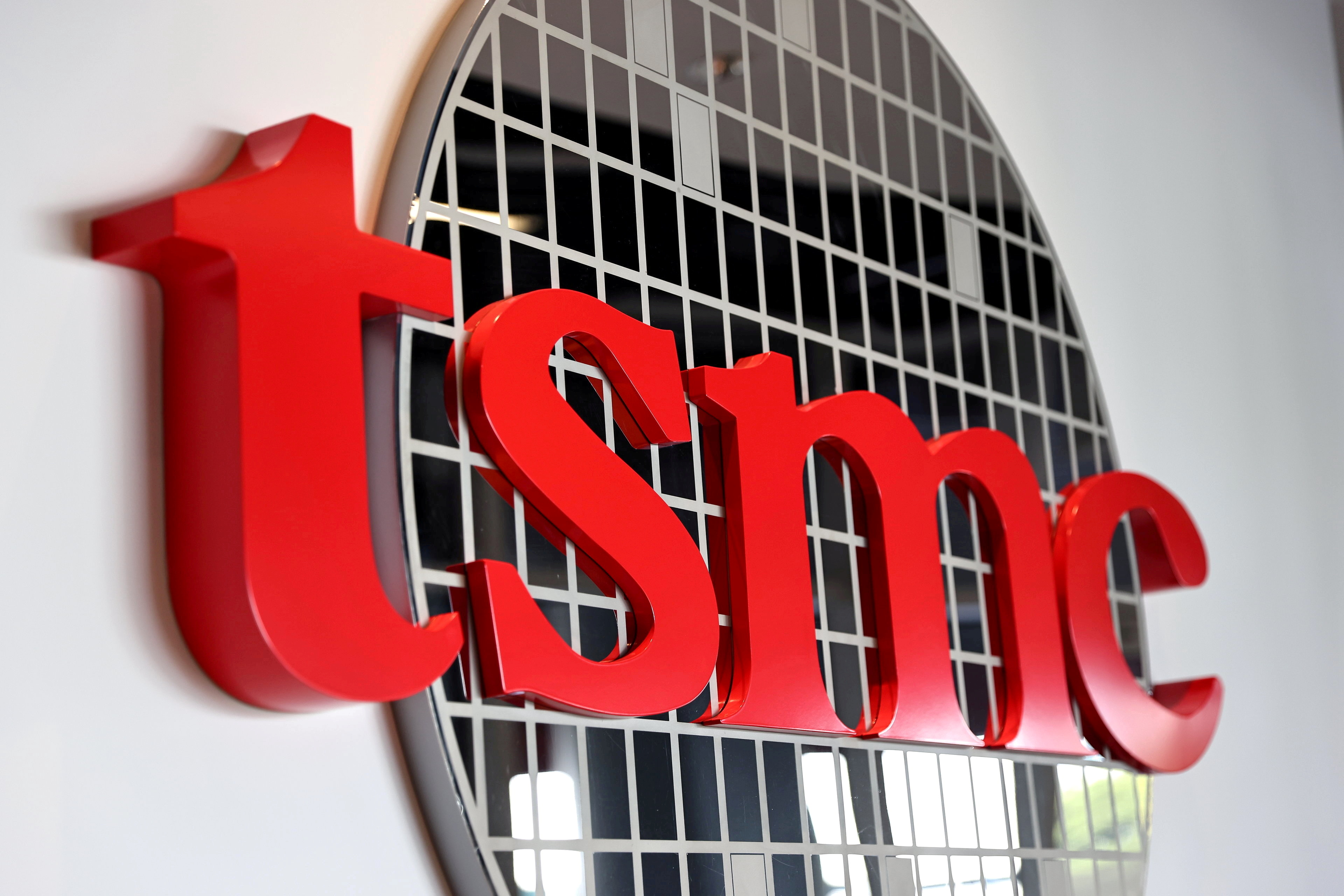
Samsung, Intel, Challenging TSMC’s Dominance
In an effort to challenge the dominance of market leader Taiwan Semiconductor Manufacturing Co. (TSMC), Samsung Electronics Co.’s chip foundry arm is focusing on augmenting production capacity and adopting advanced manufacturing methodologies.
By targeting the introduction of 2-nanometer production for mobile phone components by 2025, Samsung aims to extend its applications across diverse sectors.
Likewise, the company is intensifying production efforts in Pyeongtaek, South Korea, and Taylor, Texas, to fortify its foundry division, which serves customers on a contractual basis.
With ambitious objectives, Samsung hopes to outpace TSMC’s state-of-the-art microchip fabrication technology within the next five years.
TSMC
Taiwan Semiconductor Manufacturing Co. distinguishes itself from competitors such as Samsung by its daring appetite for risk.
Unlike its counterparts, TSMC adopts a strategy of constructing fabrication plants ahead of customer demand, relying on the belief that demand will materialize.
The approach, possibly nurtured by its longstanding market dominance, has been instrumental in TSMC’s ascent to the forefront of the industry.
Intel’s Aspirations
Intel Corporation, a significant contender in the chip manufacturing sector, has expressed its ambitions to rival the dominance of TSMC.
Recognizing TSMC’s leadership position, Intel is actively devising strategies to strengthen its market presence.
However, recent reports suggest that the company may be lagging behind in the highly competitive chip war.

The Outcome
The outcome of the rivalry, particularly in the foundry business, depends on Samsung’s ability to secure substantial clients within the next two years.
These developments could potentially diminish TSMC’s market share as the industry transitions to 2-nanometer (by 2025) and 1.4-nanometer (by 2027) nodes.
Additionally, Intel aims to enter the foundry sector with chip plants in Ohio and Magdeburg, a venture expected to materialize over the next three to five years.
China’s Determination
China, cognizant of the challenges inherent in competing across the entire value chain, is intensifying its efforts to capture a notable share in segments that are comparatively easier to replicate and master.
The Role of Equipment Suppliers
In the midst of this competitive environment, the strategies pursued by key equipment suppliers like ASML, Applied Materials, and Lam Research will be pivotal.
Their decisions and innovations will significantly influence the dynamics of the chip industry and shape manufacturers’ strategies.
The Last Bit, As the global chip war intensifies, the industry witnesses fierce competition, with Samsung and Intel striving to challenge TSMC’s dominance.
The entrance of Canon into the semiconductor manufacturing arena, coupled with the ambitions of industry giants like Samsung, Intel, and China, signifies a significant shift in the dynamics of the global chip market.
Canon’s innovative nanoimprint lithography technology presents a potential disruptive force, challenging established players like ASML and offering a more cost-effective alternative.
However, Canon, along with other contenders, must mitigate various challenges, including technological maturity, geopolitical complexities, and competition from established players such as TSMC.
As the chip industry evolves, fueled by intense competition and rapid technological advancements, the roles of key players, including equipment suppliers and emerging contenders, will continue to shape the industry’s landscape.
In the end, strategic positioning, technological innovation, and adaptability will be crucial for success in this dynamic and fiercely competitive market.


